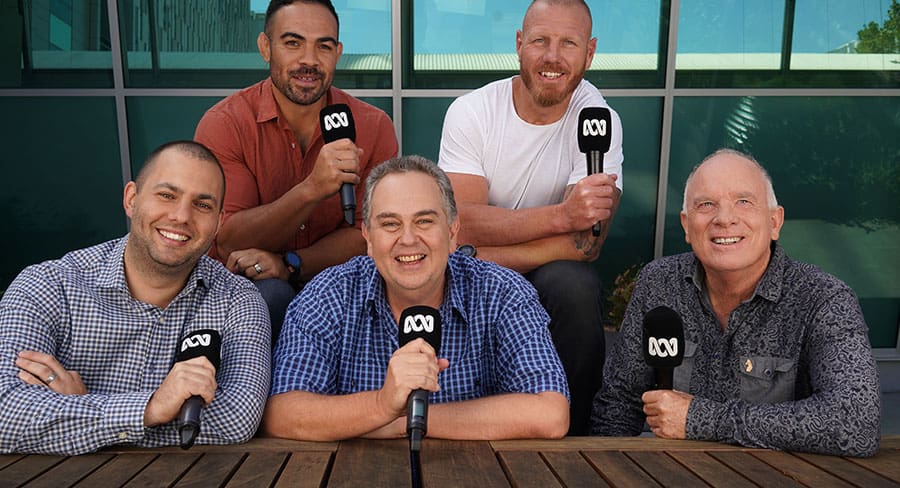Andrew Moore is entering his seventh year of calling Rugby League for the ABC after spending 17 years over two stints at 2GB.
Ahead of the new season, Moore spoke with Mediaweek about life at the public broadcaster, calling footy during Covid-19, and how he measures success.
When asked how the ABC’s NRL coverage has changed since he joined, Moore said that it is more fast-paced and the team tries to rip through things more.
“We are less reliant on mid-week prerecords, and we also added a little bit more personality in terms of humour and entertainment, but the footy remains the mains focus.”
After spending so long calling league on a commercial broadcaster Moore said that it took an adjustment period before he felt truly comfortable at the public broadcaster.
“Doing long pre-game shows without ad-breaks means you’re doing an extra 12 minutes an hour and that took some getting used to,” Moore said.
“The main adjustment was not mentioning sponsor names when it comes to grounds and teams sponsors that might come up as you go along.
“The only exception was AMII Park in Melbourne because the original name the Melbourne Rectangular Stadium or whatever it was called sounded stupid.
“Because the names of the stadiums change so dam often it makes it easier to remember where you are.”
Broadcasting during Covid-19
Moore said that last year was a fascinating year for everyone and the Grandstand team had to make different adjustments throughout the pandemic
“We ended up doing 10 weeks of Saturday and Sunday long shows from the boardroom where we really had to try and mix it up. There was enough rugby league news every week that we could keep it as our main focus, but we were doing things to keep people entertained like table tennis challenges, bocce, darts, soccer & basketball shootouts, coming up with songs of the week, and karaoke performances.
“Going back to grounds with no crowds was an adjustment and calling some games from the grandstand itself because you were only allowed a certain number of people in the broadcast booth was very weird, but everyone adapted as quickly as I could hope for.”
Moore said all indications are that this year will be almost back to normal with close to capacity crowds and fewer restrictions on broadcast booths.
“Clubs were really helpful, but for interviews after games players would have to stand 1.5 metres away and talk into a mic stand, while I think now our sideline people are allowed back on the field with a mic stand, which will make it easier.”
What is a successful public broadcast?
Moore admits that while it is not part of the ABC charter, he does refer to radio ratings when assessing if his broadcasts are successful.
“You would be lying if you said you didn’t want more listeners than anyone else. How do you gauge that? Sydney is the largest market so that’s what I look at.
“To me, the most satisfying ones are the games that the crowd are into and you’re in the flow and not aware of too many mistakes and come off pretty satisfied. Although most commentators are like me, if I make one mistake it stays with me for days if not for weeks.”
The secret to a good call
When asked for the secret to calling a game of rugby league well, Moore said that everyone sees it differently, but he has a simple rule.
“The most important factors are giving the score regularly, what position on the field players are in, and who has the ball. My rule of thumb when giving the score is twice in every set of six.”
—
Top Image: ABC NRL commentators. Back Row L to R Dene Halatau and Luke Lewis. Front Row L to R Michael Carayannis Andrew Moore John Gibbs.
